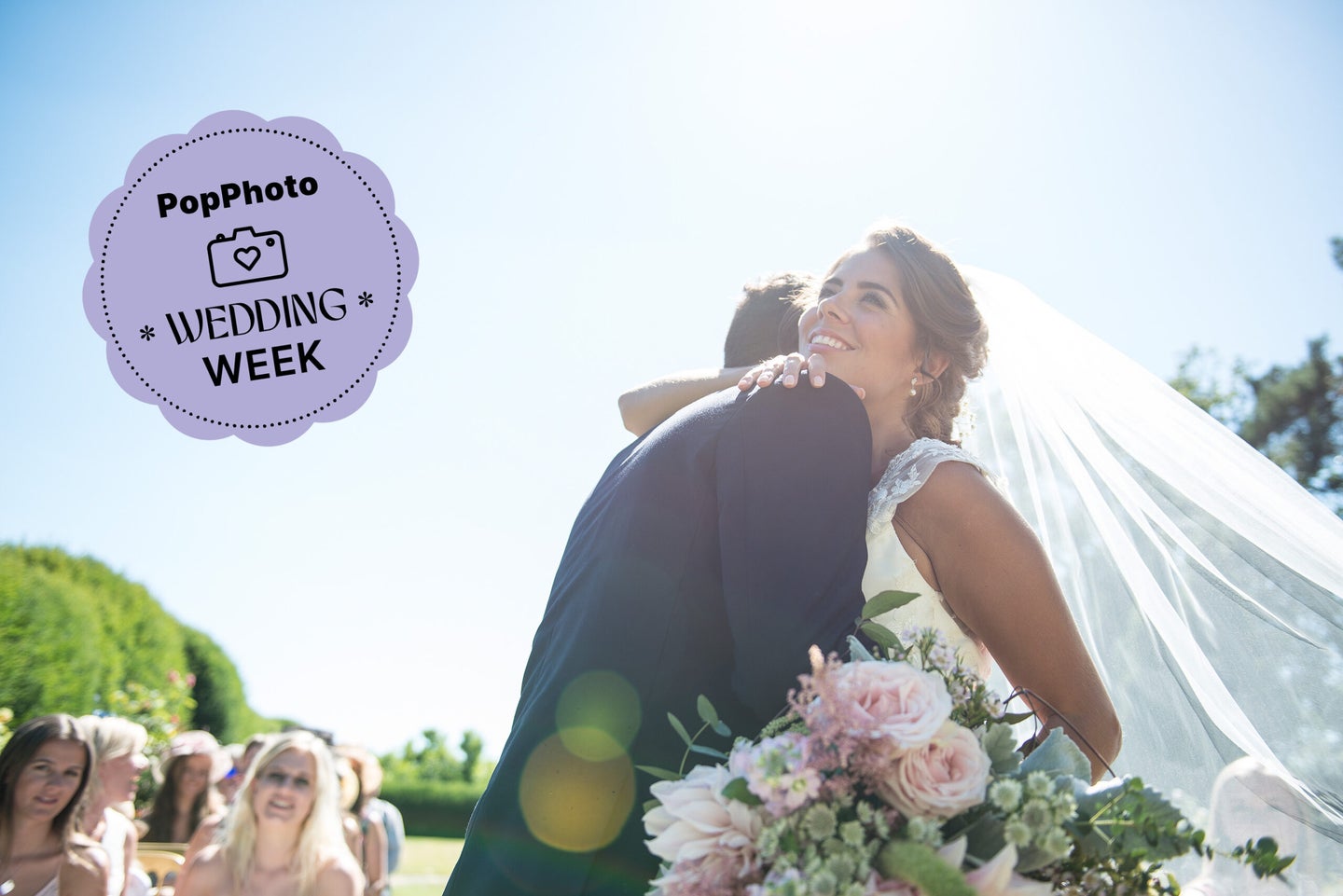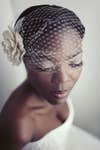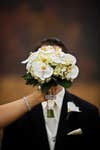Tips from a pro: An introduction to wedding photography
Ten wedding pros share their tips and techniques for capturing the holy grail of wedding photography: raw human emotion.

Photographing someone’s Big Day is a beautiful—and stressful—job, especially if you’re not a seasoned pro. This week, PopPhoto is serving up our best advice for capturing that special kind of joy.
This post has been updated. It originally published on May 18, 2012
As the ones responsible for capturing a wedding day in images, we photographers are under a ton of pressure. To help you next time you’re asked (or even hired) to assume the role, we tapped ten top wedding pros for their techniques and strategies for bringing a smile to the face of even the most demanding bride or groomzilla.
This isn’t about what equipment to buy to shoot weddings—you can read about that here. Nor is it about conventional poses, lighting setups, shot lists, or marketing strategies. (For these, see any of the 200 wedding tutorial books you can find at bookstores and online.)

Instead, we want to bring you the thought processes of America’s top wedding shooters as they hit the ground running to cover a typical event. What are they looking for as they go from formal family portraits to the ceremony, to the dinner and reception? How do they (subtly) coax participants into the poses and pictures that will produce a stunning wedding album? And how do they set up the circumstances that allow them to find, mine, and even create that most important of wedding guests: human emotion.
Chasing emotions
A set of pictures that capture the deep and true feelings between a couple getting married—and the emotions and hope that friends and family feel for them—is the holy grail of wedding photography. This, ultimately, is what we’re after.
As Dave Getzschman, a former wedding pro based in Los Angeles puts it thusly: “Emotion is the substance of wedding photography. You can and should build images around light, color, and composition, but without emotion, there’s a vital human element missing.”

Getzschman looks for real interactions between the couple, the wedding guests, and members of the bridal party. “These emotions reflect our humanity and translate immediately and powerfully to viewers regardless of their culture, race, ethnicity or language,” he says.
How do wedding photographers find or create the conditions in which these emotions are allowed to rise to the surface in images? “I engage with my subjects and it gains their trust. I arrive early, introduce myself, learn people’s names, ask questions, listen,” Getzschman says. “When intimate moments occur, I want to have ingratiated myself to the point where I can stand a few feet away from my subjects with a wide-angle lens and have no one feel that I’m intruding.”

For photographer Ira Lippke, it’s all about depressurizing the situation. For example, during a couple’s formal portrait session, “I emphasize that the photography is secondary. The primary reason for pulling the couple away from their guests is for them to have some meaningful time together, just the two of them on their wedding day,” he says. The couple immediately relaxes and focuses on each other, “and I get emotionally real images that way.”
Angelica Glass offers a similar approach. When subjects are standing and see the camera, they often tense up. Some even stop breathing. “My favorite strategy is to ask them to sit. Once seated, people tend to become more relaxed and breathe normally,” she says. “For shots of the bridal couple, I also ask others to leave the room. That way the couple can relax without too many sets of eyes on them.”

New York-based shooter Ron Antonelli also takes a physical approach to posing portraits. “I remind the couple to touch one another. Whether it’s holding hands or having an arm around a partner, a spontaneous moment will always seem more emotionally connected if a couple is physically connected,” he advises.
Importance of candids
While beautifully composed moments at the altar and attractively posed or semi-posed portraits are important components of a fully accomplished wedding album, the images that resonate—the ones that viewers linger over—are often the candid images that showcase memorable exchanges and implied narratives.
For Todd Laffler, “Candids are king. When I’m trying to capture impactful candid moments, I think of myself as a hunter in camouflage, observing and waiting out my prey. It often takes keen observation, anticipation, and patience to capture a moment at its zenith.”

He continues, “One of my favorite times for candids during a full-mass, Catholic or Episcopalian service occurs during communion. At this time, after the bride and groom have received the Host, the focus turns away from them as the rest of the congregation takes communion. This is when I find loving, intense, and intimate moments between the two. It doesn’t always happen, but when it does, I can be rewarded as they happily share a private moment in the middle of the ceremony, up near the altar.”
Sergio, a single-named photographer based in Tucson, AZ, carries the hunting metaphor a little further: “Real moments are the most valuable prey of all. I think of such a moment as a mouse. I need to set a trap of light and composition, and then be patient. You don’t chase a mouse with a mousetrap; you set the bait and wait.”

The best candid pictures capture a moment, but they also imply a story or define the relationships among families and friends. “I don’t find it the least bit satisfying to make pretty, one-dimensional wedding pictures,” says Getzschman. “I challenge myself to make multidimensional images that suggest a context, convey a narrative, and offer insight into the relationships between my subjects.”
The truth about shot lists
Even wedding warriors who deny it have a shot list imprinted somewhere along their strands of DNA. Their trick is to approach each wedding milestone (procession, vows, first kiss, recession, reception toasts, first dance, etc.) with a fresh eye.
For example, Laffler likes to “photograph the bride and groom entering the ballroom for the first time from behind with a wide-angle lens. This way, we can see all their guests’ reactions to them coming in.”
Of course, he can only do this if he has a second photographer working for him to cover the more typical vantage point, in front of the bride and groom.

Ron Antonelli agrees that one way to get creative with the usual wedding scenes is to capture them from unusual vantage points. “We sometimes mount a remote camera with a wide-angle lens to the chuppah [bridal canopy] during a Jewish ceremony and hide it so it can’t be seen. I fire the camera from anywhere, making photos that otherwise would have been impossible. It’s fun later on when our clients react on first seeing the shots. They had no idea we had taken them!”
Lippke also champions unusual points of view: “I love to shoot the first dance, for example, while crouching at the edge of the dance floor,” he says. “I position myself so that the couple are naturally backlit by the perimeter floodlights.”
Composition counts

Jeff Newsom of San Luis Obispo, CA, finds that careful lens selection and composition can add interest to a wedding scene that on the surface may appear bland. “I explore a lot at every wedding I shoot,” he says. “I’ve found over time that I favor getting closer with a wider lens than standing back with a telephoto. It gives me a natural sense of being close to the subject.”
This technique gives him a chance to showcase a bride, say, by separating her from the background through defocus or by using a low camera angle to eliminate background clutter. He also prefers strong backlighting to wash out a background.

Seeing the mise en scene
Given how much couples (or their parents) usually spend on lighting, flowers, food, music, and all the other expenditures that make up a wedding, the photographer can’t neglect them. You should always capture the venue in wide, establishing shots; get close-ups of table settings, floral arrangements, and the bride’s gown, as well as other macro views.
Ira Lippke approaches the big picture the way a landscape photographer would. “I love landscapes,” he says. “The wide establishing shots of the wedding venue are a critical part of telling the wedding’s story. Personally, my favorite environmental images have people in them, but we get the undisturbed venue before guests arrive, too.”
Technique is crucial, Lippke adds. “There’s an art to bringing out the character and detail of the whole scene in a beautiful way. For me, it’s about finding the best camera angle to produce a beautiful composition and then deciding on the best exposure. I think about whether I want to utilize a slow shutter speed to create some motion blur that would show a human presence without that particular person being distracting, or if I want the entire scene in sharp focus.”
Have an assistant

Being able to focus on both the big picture and the intimate moments that constantly, yet unpredictably, arise during a typical wedding means that this kind of photography is really a two-person job. Having an assistant isn’t a luxury. For dozens of reasons, it’s a necessity. Almost all the pros shown here work with a second shooter—their coverage is strictly a tag-team effort.
“Immediately before the ceremony I meet with my associate photographer, and we make our game plan of how we are going to capture the different aspects of the ceremony and how the layout of the scene would be best photographed,” explains Lippke. “Usually one of us stays upfront to document what is happening at the altar, while the other works on capturing the big picture view. For the reception and cocktails, we take turns covering what is happening while the other photographer spends some time exploring details and the environment.”
Develop yourself

Craig Fritz, who with his wife Kitty makes up Twin Lens Images in rural New Mexico, stresses the importance of developing your own, unique pictorial style.
“Lately, we have been making a concerted effort to stay off of wedding blogs and look at fewer wedding magazines,” he says. “Not because we don’t enjoy looking at the great work out there, but because we recognize that when you inundate yourself with that type of imagery, you can begin to see other photographers’ themes, techniques, and photos in the scene you’re attempting to photograph. We very much want to do our own thing, see our own way, and so this is one way we’re attempting to keep ourselves visually fresh.”